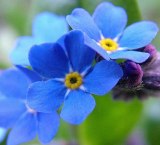Cormorants are part of a world-wide order of seabirds that includes pelicans, boobies, tropicbirds, and frigate birds. They are members of the family Phalacrocoracidae and can be found throughout North America in both fresh water and marine habitats. Double-crested, Red-faced, and Pelagic cormorants are the only cormorants found in Alaska. Cormorants dive underwater and use their large webbed feet as paddles to swim in search of food. They eat a wide variety of foods, but fish that live close to the ocean floor are their favorites.
Unlike other seabirds, cormorants do not venture far from their nesting colony. They build tall, stacked nests out of whatever plant material they can find and are not above stealing it from one of their unsuspecting neighbors. Often, one bird of the pair will present a piece of grass or seaweed to its mate as a way of strengthening their bond. For most of the year, cormorants wear a rather dull plumage. When the breeding season approaches they dress -up in their best outfits in hopes of attracting a mate. Their dusty gray-black feathers take on an iridescence like that of pea-cock feathers, although not quite as fancy. Depending on the light, their dazzling plumage can look blue, green, purple, black, brown or all of these at once.
The Double-crested Cormorant is a member of the cormorant family of seabirds. It occurs along inland waterways as well as in coastal areas, and is widely distributed across North America, from the Aleutian Islands in Alaska down to Florida and Mexico. Measuring 70–90 cm (28–35 in) in length, it is an all-black bird which gains a small double crest of black and white feathers in breeding season. It has a bare patch of orange-yellow facial skin. Five subspecies are recognized. The Double-crested Cormorant is found near rivers, lakes and along the coastline. It mainly eats fish and hunts by swimming and diving. Its feathers, like those of all cormorants, are not waterproof and it must spend time drying them out after spending time in the water. Once threatened by use of DDT, the numbers of this bird have increased markedly in recent years.
Double-crested Cormorants breed in the Aleutian Islands and on the southern coast of Alaska, and on parts of the Pacific coast of Washington and Oregon, as well as San Francisco Bay, California. The breeding range of the species also includes appropriate habitat in the Rockies and the plains states and provinces, from Saskatchewan to western Ontario and from northern Utah to the Great Lakes, as well as coastal regions from Quebec to Long Island, New York, and much of Florida. Double-crested Cormorants also breed in Cuba and in Baja California. Migration is highly variable among different populations of Double-crested Cormorants. Those that nest in the interior of the continent do migrate, probably to California and Mexico, while those that breed on the Great Lakes and the north Atlantic coast winter along the Gulf of Mexico, in the lower Mississippi River valley, on the mid-Atlantic seaboard, and in the Carolinas. Alaskan Double-crested Cormorants apparently winter off the coast of southern British Columbia. Other populations remain resident year-round. The red-faced cormorant is a shy medium-sized cormorant with blackish plumage nests in small, widely dispersed colonies on steep, inaccessible cliff faces. Never venturing far from the sea, the red-faced cormorant comes to land only to breed or roost. Breeding occurs in a narrow band from the Gulf of Alaska to the central and western Aleutian Islands, through the southern Bering Sea to Russia and on to the northern Sea of Japan. In Alaska, there are also nesting sites on the Pribilof Islands and in Norton Sound. The species is not migratory. A few winter observations indicate that adults and immature birds disperse and feed near their breeding areas.
The Red-faced Cormorant occurs only in the cold seas along the Alaskan coast, west to the Aleutian and Commander islands. The population is vulnerable due to the small size and location of its range. St. Paul is the most accessible location in Alaska with a chance of seeing nesting red faced cormorants and the best places are Reef Point, apadni Cliffs, and Ridge Wall. Though less accessible, St. George, with its vast cliff faces, attracts the greatest biomass of nesting seabirds. Because of its limited range and location of shipping lanes through the heart of that range, it is vulnerable to oil spills and other marine pollutants. This species is also vulnerable to introduced predators on the islands where they nest.
The Red-faced Cormorant breeds in mixed colonies with other seabirds, on a wide or narrow ledge on a cliff or steep slope above water. They lay three to four eggs, May to June, in a nest mound made of grass, seaweed, moss, and debris, with deep depression in the center. Diet consists primarily of fish, especially sculpins, pollock, and sand lance.
|








